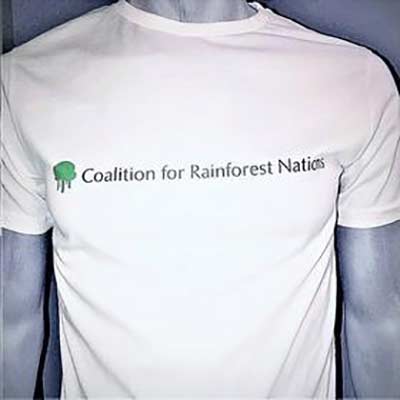
Saint Lucia and Dominica Gather REDD+ Data
The United Nations Framework Convention on Climate Change (UNFCCC) REDD+ mechanism is internationally recognized as responsible for removals of over 9 gigatonnes of greenhouse gasses by tropical forests. It is enshrined in the Paris Agreement and is meant to provide compensation for countries who keep forests standing at national scale. Preserving rainforests is crucial to fighting climate change because of the work they do absorbing greenhouse gasses.
This November, Marcial Arias, Milena Niño, and Lucila Balam, experts from CfRN’s RRR+ technical training team, collaborated on a land use and land use change assessment campaign with in-country experts from Saint Lucia and Dominica. They used CfRN’s Land Use Assessment App (CfRN LUA) – a recent innovation that significantly speeds up data collection -- to measure the carbon stocks, and the emission and removal of greenhouse gases associated with Agriculture, Forestry and Other Land Use (AFOLU) activities, following Intergovernmental Panel on Climate Change (IPCC) guidance.
Accurate data on land and land use change is a key input to reporting REDD+ results. GHG removals recognized by the REDD+ process can be monetized as sovereign carbon credits. National GHG inventories and Forest Reference Levels (FREL/FRLs) are also derived from it. The UNFCCC has defined Forest Reference (Emission) Levels (FREL/FRLs) as benchmarks for assessing each country’s performance in reducing emissions and increasing removals associated with the implementation of REDD+ activities.
Using a land representation approach provided by the IPCC – the foremost authority on the subject – the team studied specific point locations distributed at a national level in satellite imagery of Saint Lucia and Dominica. National experts from both countries assessed, through the CfRN LUA App, the impact of disturbances such as fires, hurricanes, logging, and shifting cultivation on emissions and removals, and both extended their land use and land use changes time series to include the years 2019-2022.
The work built on a November 2019 ‘South-South Knowledge Exchange’ seminar on “GHG tools and IPCC guidelines to be used for Forests and Other Land Use-GHG inventory preparation,” which CfRN facilitated. Given by experts from CfRN, Belize, and Panama, for experts from Saint Lucia and Dominica, it yielded a consistent time series of Land Use and Land Use Changes for both countries, which became the main input for both countries’ GHG Inventory for 2000-2018 and their first FREL/FRLs.
In Saint Lucia, the information collected in 2019 was used in the preparation and submission of the Forests and Other Land Use GHG included in its Biennial Update Report (BUR) and the FREL/FRL submitted in January 2021. Dominica used the information collected in its Forests and Other Land Use GHG included in its Nationally Determined Contribution Update to the Paris Agreement, and the FREL/FRL it submitted in January 2022. These are technical documents for Paris Agreement and REDD+ reporting, available to the public here.
The new data will be used by Saint Lucia to update its national GHG inventory and its Forest Reference Emission Level/Forest Reference Level (FREL/FRL) for submission to the UNFCCC in January, 2023 and to draft its REDD+ results Technical Annex. Dominica will use the new data to draft its REDD+ results Technical Annex as well.
The technical rigor of REDD+ reporting, and the care put into the work of enhancing national data collection and analytical tools leaves Saint Lucia and Dominica better armed to draft plans, policies, and strategies to deal with climate change and its impacts. National Databases of Land Use, Land Use Changes and Disturbances for the years 2000 to 2021; institutionalized methods for continued data collection; documentation of their methods, procedures, and quality control protocols all become national assets which benefit the people. And they bring both nations one step closer to monetizing the work their forests now perform for free.

Dominica Team: Sheldon Simon (Forestry Officer from Forestry, Wildlife and Parks), Bradley Guye (REDD+ Technical lead from Forestry, Wildlife and Parks)
Saint Lucia team: Rebecca Rock (Assistant Chief Forestry Officer and REDD+ Technical lead, from Forestry Department), Odetta Lewis (Forest Officer, from Forestry Department), Tamisha Doxillie (Forest Officer, from Forestry Department), Chris Sealys (Forest Officer, from Forestry Department)


